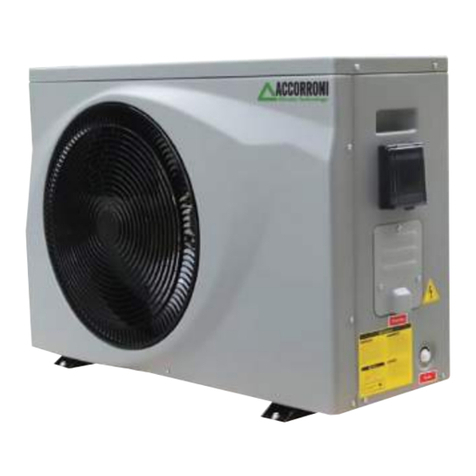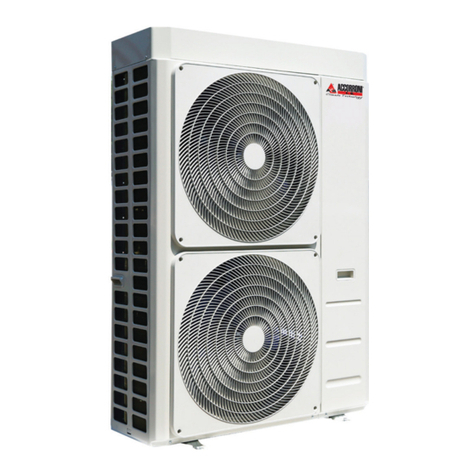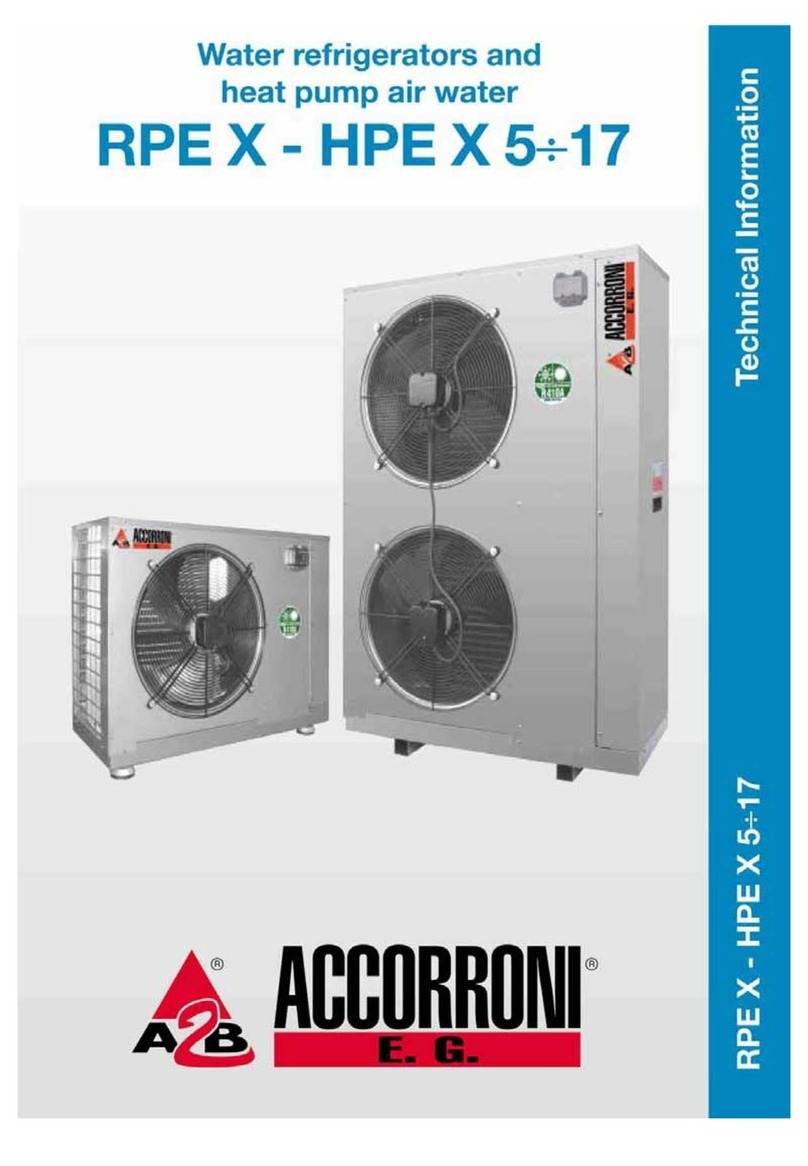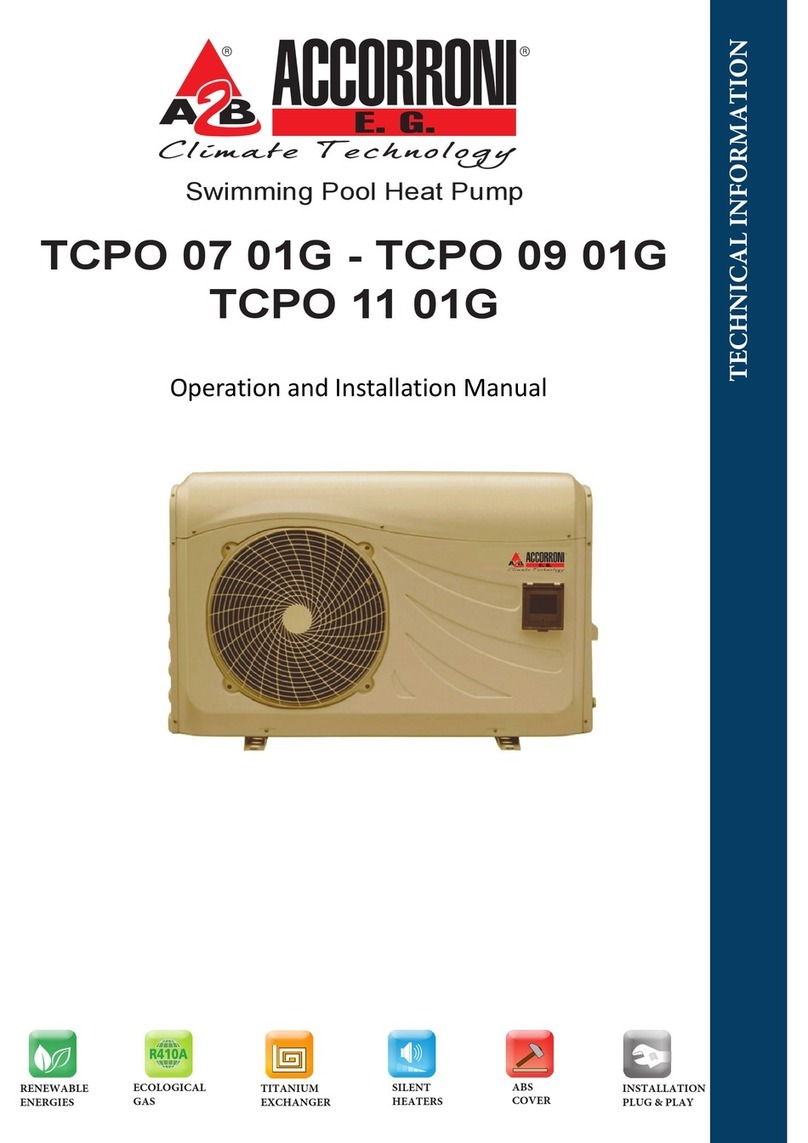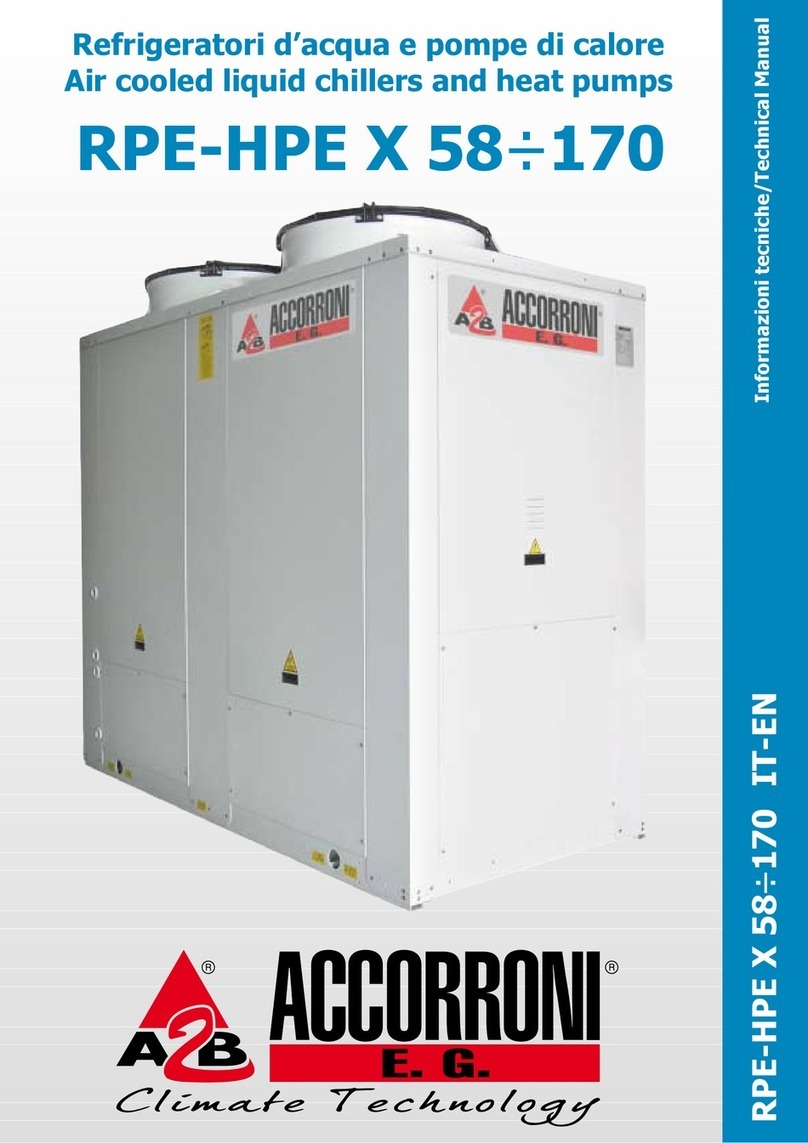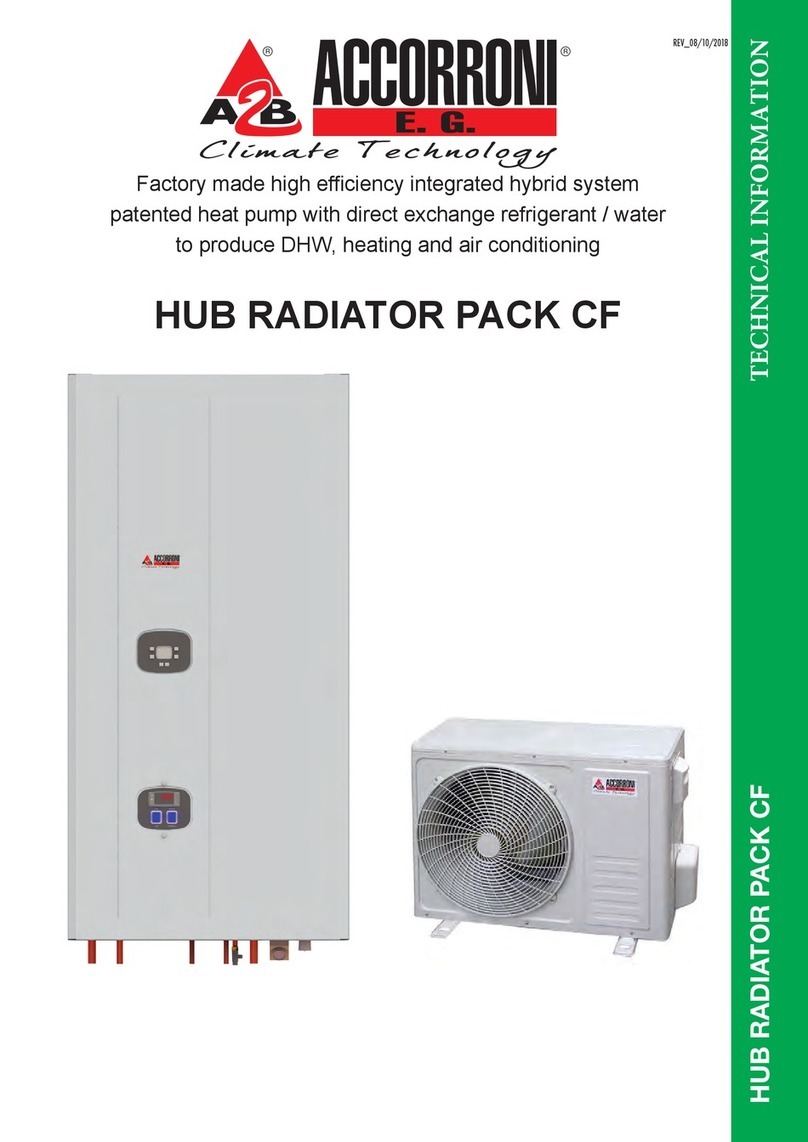
CALIDO1 DHW heat pump with tank
8
4.4 REFRIGERANT SAFETY DATA SHEET
Name: R134a (100% ,1,1,2-Tetra uoroethane).
HAZARDS INDICATIONS
Main hazards: Asphyxia.
Speci c hazards: The rapid evapora on may cause freezing.
It can cause cardiac arrhythmia.
FIRST AID MEASURES
General informa on: Do not give anithing to an unconscious person.
Inhala on:
Trasport in the open air.
Use oxygen or ar cial respira on if necessary.
Do not administer adrenaline or similar substances.
Eye contact: Rinse carefully with plenty of water for at least 15 minutes and consult a doctor.
Contact with skin: Wash immediately with plenty of water.
Immediately remove contaminated clothing.
FIRE PREVENTION
Ex nguishing media: Whatever.
Speci c hazards: Increased pressure.
Speci c methods: Use water spray to cool containers.
Special protec ve equipments: Use breathing apparatus in con ned spaces.
ACCIDENTAL RELEASE MEASURES
Personal precau ons:
Evacuate personnel to safety areas.
Ven late appropriately.
Use personal protec ve equipment.
Environmental precau ons: Evaporate.
Cleaning methods: Evaporate.
HANDLING AND STORAGE
Handling measures/technical pre-
cau ons: Ensure su cient air exchange and/or suc on in workplaces.
Advice for safe use:
Do not breath in vapores or aerosol.
Do not pressure test with air/HFC-134a mixtures. Can form a combus ble mixture with air at pressures above atmo-
spheric pressure when the volume ra o exceeds 60%.
Storage: Close carefully and store in a cool, dry and well ven lated area.
Keep in original containers. Incompa ble products: explosive, ammable materials, organic peroxide.
EXPOSURE CONTROLS/PERSONAL PROTECTION
Control parameters: AEL (8-h and 12-h TWA) = 1000 ml/m3.
Respiratory protec on: Use self-contained breathing apparatus for rescue and maintenance work in tanks.
Vapours are heavier than air and can cause choking by reducing the oxygen available for breathing.
Eye protec on: Full protec ve goggles.
Hand protec on: Rubber gloves.
Hygienic measures: No smoking.
PHYSICAL AND CHEMICAL PROPERTIES
Appearance: Colourless lique ed gas.
Odour: Similar to ether.
Boiling point: -26.5°C at atmospheric pressure.
Ligh ng point: Does not ignite.
Density: 1.21 kg/l at 25°C.
Solubility in water (wt %):0.15.
STABILITY AND REACTIVITY
Stability: No reac vity when used with appropriate instruc ons.
Materials to avoid: Alkali metals, alkaline earth metals, powdered metals, granulated metal salts.
Dangerous decomposi on products: Halogen acids, carbon dioxide (CO2), carbon monoxide, uorocarbons, carbonyl halides.
Dangerous reac ons:
The product is not ammable in contact with air under ambient condi ons of temperature and pressure. Under pres-
sure with air or oxygen, the mixture may become ammable. Some mixtures of HCFC or HFC and chlorine may become
ammable or reac ve under certain condi ons.
TOXICOLOGICAL INFORMATION
Acute toxicity: LD/LC50/inhala on/4 hours/on rat = 1107000 mg/m3.
Local e ects: Concentra ons substan ally above the TLV (1000 ppm) may cause narco c e ects.
Inhala on of decomposed products at high concentra ons may cause respiratory failure (pulmonary edema).
Long term toxicity: Has not shown carcinogenic, teratogenic or mutagenic e ects in animal experiments. May cause cardiac arrhythmia.
Threshold limit for cardiac sensi vity: 312975 mg/m3. Threshold limit for anaesthe c e ects: 834600 mg/m3.
ECOLOGICAL INFORMATION
Global warming poten al
GWP (R744=1): 1430
Poten al deple on Ozone ODP
(R11=1): 0
Disposal considera ons: Usable with recondi oning.
